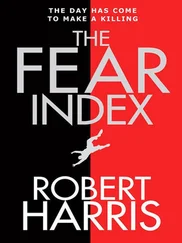Robert Harris - Selling Hitler
Здесь есть возможность читать онлайн «Robert Harris - Selling Hitler» весь текст электронной книги совершенно бесплатно (целиком полную версию без сокращений). В некоторых случаях можно слушать аудио, скачать через торрент в формате fb2 и присутствует краткое содержание. Город: London, Год выпуска: 2009, ISBN: 2009, Издательство: Arrow Books, Жанр: Публицистика, История, на английском языке. Описание произведения, (предисловие) а так же отзывы посетителей доступны на портале библиотеки ЛибКат.
- Название:Selling Hitler
- Автор:
- Издательство:Arrow Books
- Жанр:
- Год:2009
- Город:London
- ISBN:9781409021957
- Рейтинг книги:4 / 5. Голосов: 1
-
Избранное:Добавить в избранное
- Отзывы:
-
Ваша оценка:
- 80
- 1
- 2
- 3
- 4
- 5
Selling Hitler: краткое содержание, описание и аннотация
Предлагаем к чтению аннотацию, описание, краткое содержание или предисловие (зависит от того, что написал сам автор книги «Selling Hitler»). Если вы не нашли необходимую информацию о книге — напишите в комментариях, мы постараемся отыскать её.
APRIL 1983: In a bank vault in Switzerland, a German magazine offers to sell more than 50 volumes of Hitler’s secret diaries. The asking price is $4 million…
Written with the pace and verve of a thriller and hailed on publication as a classic,
tells the story of the biggest fraud in publishing history.
Selling Hitler — читать онлайн бесплатно полную книгу (весь текст) целиком
Ниже представлен текст книги, разбитый по страницам. Система сохранения места последней прочитанной страницы, позволяет с удобством читать онлайн бесплатно книгу «Selling Hitler», без необходимости каждый раз заново искать на чём Вы остановились. Поставьте закладку, и сможете в любой момент перейти на страницу, на которой закончили чтение.
Интервал:
Закладка:
He arrived in Germany in the middle of September. His method of solving the mystery of Hitler’s fate owed something to the novels of Agatha Christie. He was the amateur detective; the Führerbunker the country house where the crime had been committed; its survivors the witnesses who could provide the vital clues. He quickly demolished the stories of some of the more obvious fantasists: the doctor who claimed to have treated Hitler for a lung wound sustained during fighting around the Berlin Zoo; the female Gestapo agent who swore she could take him to the Bavarian estate where Hitler was living in a secluded foursome with Eva, Gretl, and Gretl’s husband, Hermann. To uncover the truth he compiled a list of everyone who had attended Hitler in his final days and travelled the country tracking them down. He interrogated Keitel, Jodl, Doenitz and Speer. In their prison camps he questioned the Führer’s SS guards. At Berchtesgaden he caught up with two of Hitler’s secretaries, Johanna Wolf and Christa Schroeder; he almost captured a third, Gerda Christian, when he turned up at the home of her mother-in-law – he missed her by only a couple of days. By the time he came to write his report he had found seven witnesses who were with Hitler in the final week of his life, including the chauffeur, Erich Kempka, who provided the gasoline with which his master’s body was burned, and a guard, Hermann Karnau, who witnessed the funeral pyre.
On the night of 1 November 1945, Trevor-Roper presented a summary of his findings to an audience of sceptical journalists in the Hotel-am-Zoo in Berlin. One of them, the Newsweek correspondent, James P. O’Donnell, later recalled the confident impression he made: a ‘dapper’ figure in his wartime uniform, crisp and sarcastic, ‘a master of tart understatement’.
That evening, Trevor-Roper told for the first time the story of Hitler’s death which has since become familiar: the final appearance of the Führer, accompanied by Eva Braun, to say goodbye to his staff; their retirement to his sitting room; their deaths – his by a revolver bullet, hers by poison – and their subsequent cremation in the garden of the Chancellery. Trevor-Roper fixed the time of death as ‘shortly after 2.30p.m. on 30 April 1945’ and he concluded with a magisterial rebuke to the press:
There is no evidence whatever to support any of the theories that have been circulated and which presuppose that Hitler is still alive. All such stories which have been reported have been investigated and have been found to be quite baseless; most of them have dissolved at the first touch of fact and some of them have been admitted by their authors to have been pure fabrication.
‘As of that evening,’ wrote O’Donnell, ‘most of the international press stationed in Berlin was finally convinced that Hitler was indeed dead.’ His handling of the case earned Trevor-Roper the title ‘The Sleuth of Oxford’.
The inquiry was an unprecedented opportunity for an ambitious young historian. With the permission of British intelligence Trevor-Roper turned the information he had collected into a book. The Last Days of Hitler appeared in 1947. It was hailed in Britain as ‘a masterpiece’. In the United States, Arthur Schlesinger Jr declared it ‘a brilliant professional performance’. The book has since been reprinted thirteen times in Great Britain alone. By 1983 its world-wide sales amounted to almost half a million copies. Trevor-Roper bought a Bentley on the proceeds and for a while was said to hold the record for driving from Oxford to London in under an hour.
Behind the Iron Curtain, the book was banned. ‘The Polish edition was stifled in the publisher’s office,’ wrote Trevor-Roper, ‘the Bulgarian edition destroyed by the police on its appearance.’ The Russian position remained unchanged. ‘It was never allowed that Hitler might be dead. It was assumed, and sometimes openly stated, that he was alive.’ This doctrine officially remained in force until 1968 when the communist author Lev Bezymenski was allowed to publish the autopsy report in his book The Death of Adolf Hitler . Even then the truth had to be distorted for political effect. In his anxiety to avoid being captured alive, Hitler appears to have simultaneously pulled the trigger of a revolver held to his head and bitten on a glass ampoule of cyanide clenched between his teeth. But despite the unanimous evidence of the witnesses in the bunker that they heard a shot, despite the fact that the autopsy report itself stated that ‘part of the cranium’ was ‘missing’, Bezymenski insisted that Hitler had only taken poison and had thus died ‘like a dog’: it was apparently still important to the Soviet Union that Hitler should be depicted as too cowardly to take the soldier’s way out. Twenty-three years after the concealment of its discovery, the corpse had not lost its propaganda value.
Researched at first hand in the interrogation cell and the secret service registry, The Last Days of Hitler was unique: the insight of an historian combined with the scholarship of an intelligence officer on active service. Trevor-Roper was given access to the diaries of Goering’s chief of staff, General Koller, as well as those of Schwerin von Krosigk, the Minister of Finance. He was the first to make use of the diary kept by Hitler’s valet, Heinz Linge, discovered by a British officer amid the ruins of the Chancellery in September 1945. In the middle of November, after the completion of his original report, he was summoned back to Germany from leave in Oxford to authenticate Hitler’s last will and testament. Shortly afterwards, in pursuit of two missing copies of that document, he led a group of CIC officers in a midnight raid on a house near the Austrian border. After a long interrogation session he finally broke the resistance of a German major who admitted possessing a copy of Hitler’s will. The major led him into the garden of his home and in the darkness broke open the frozen ground with an axe to retrieve a bottle: ‘breaking the bottle with the axe, he drew out and handed to me the last missing document….’
Such colourful adventures set Trevor-Roper apart from more conventional academic historians. His experience taught him that Nazi documents could surface unexpectedly in all manner of unlikely places. He also appreciated that it was sometimes necessary to deal with unorthodox and even unsavoury characters. One could not afford to be too squeamish. In 1952, he met Francois Genoud, a Swiss lawyer whom he described at the time in the Sunday Express as ‘an unrepentant Nazi sympathizer’. Genoud, a former member of the SS, whose name was later to be linked with the Palestine Liberation Organization, had obtained over a thousand type-written pages known as the Bormann–Vermerke : the ‘Bormann Notes’. They were meticulously kept in Martin Bormann’s personal custody and he had written upon them, ‘Notes of fundamental interest for the future. To be preserved with the greatest care.’ They proved to be the transcripts of more than three hundred of Hitler’s mealtime monologues: the interminable, rambling soliloquies which had passed for conversation at the Führer’s dinner table and which had been recorded on Bormann’s orders as if they were Holy Writ. The material legally belonged to Genoud. After the war he had acquired the copyright in Hitler’s literary estate from the dictator’s sister, Paula. Similar contracts had been agreed with Bormann’s widow and the heirs of Josef Goebbels (‘these poor people,’ Genoud later called them, ‘whose rights and property have been plundered’). Trevor-Roper edited, introduced and helped arrange publication of Genoud’s material, which appeared in 1953 as Hitler’s Table Talk .
Fascinating, yet simultaneously tedious and repellent in its grinding prose and vertiginous imagery, the book captures the authentic voice of Hitler. Lunch might find him lecturing Dr Porsche on the superiority of the air-cooled engine; over dinner he would hold forth on the origins of the planet. He had an opinion about everything: the inability of the English to perform Shakespeare, the ‘harmfulness of cooked foods’, the legends of ancient Greece, the toad (‘a degenerate frog’), Winston Churchill (‘an utterly immoral, repulsive creature’), the ‘negroid’ appearance of Eleanor Roosevelt, prelunar civilization and the mental capacity of a dog. In his brilliant introductory essay, Trevor-Roper depicted Hitler’s mind as ‘a terrible phenomenon, imposing indeed in its granitic harshness and yet infinitely squalid in its miscellaneous cumber – like some huge barbarian monolith, the expression of giant strength and savage genius, surrounded by a festering heap of refuse – old tins and dead vermin, ashes and eggshells and ordure – the intellectual detritus of centuries’.
Читать дальшеИнтервал:
Закладка:
Похожие книги на «Selling Hitler»
Представляем Вашему вниманию похожие книги на «Selling Hitler» списком для выбора. Мы отобрали схожую по названию и смыслу литературу в надежде предоставить читателям больше вариантов отыскать новые, интересные, ещё непрочитанные произведения.
Обсуждение, отзывы о книге «Selling Hitler» и просто собственные мнения читателей. Оставьте ваши комментарии, напишите, что Вы думаете о произведении, его смысле или главных героях. Укажите что конкретно понравилось, а что нет, и почему Вы так считаете.












